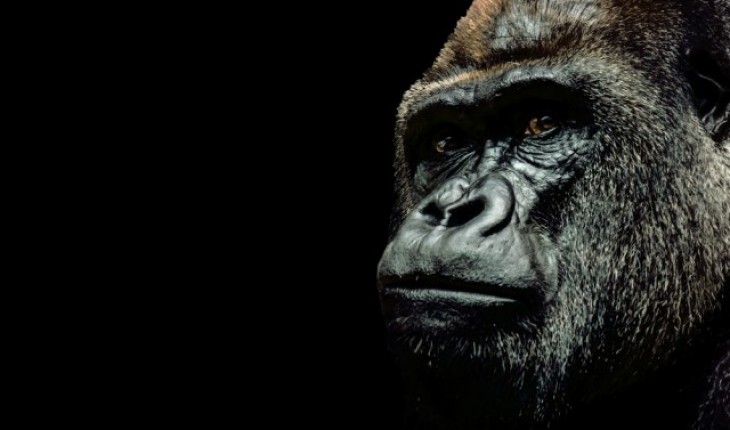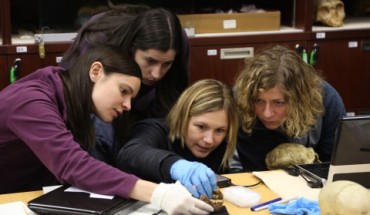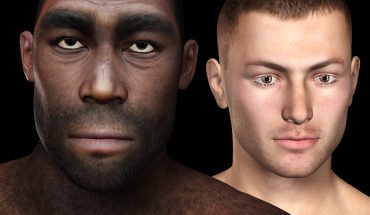Photo credit: The work of Jane Goodall, Dian Fossey, and Biruté Galdikas transformed the way humans view their relationship to other primates. andriano.cz/Shutterstock
By Ben Taub
Breaking down the rigid barriers established by the male-dominated academic institutions of the 1960s, three pioneering female researchers showed the world that real science requires guts. In many ways, their relative exclusion from the self-congratulatory domain of male “armchair anthropologists” is what gave them the freedom to go against the grain and – in spite of some stiff opposition – eventually convince their colleagues that in order to learn about man’s closest relatives, they’d have to woman up.
In the mid-20th century, very little was known about the behavior of hominids, a taxonomic group that includes chimpanzees, gorillas, orangutans and bonobos, as well as humans. The world’s leading primatologist at the time was a Kenyan-born anthropologist named Louis Leakey, who wanted to put together a research team to uncover some of the mysteries of these great apes, yet found no suitable candidates among his peers. Fortunately for him, he was approached by three intrepid women who recognized that studying these animals can only be achieved by abandoning the safety of the lecture theater and completely immersing oneself in some of the world’s most inhospitable jungles for decades at a time.
Living among their respective study species, Jane Goodall, Dian Fossey, and Biruté Galdikas – collectively known as the Trimates – not only reshaped the way that humans understand their own behavior, but revolutionized the entire scientific method behind primatology.
Jane Goodall (1934 – )

Jane Goodall began her research with chimps in Tanzania in 1960. YouTube/Festival Internacional de Cine del Medio Ambiente
Born in London in 1934, chimpanzee enthusiast Goodall had no university education when she first contacted Leakey in 1957. Though he initially hired her as a secretary, her obvious passion for the study of primates convinced him to take a chance and come up with the funds to send her to Tanzania, where her incredible commitment and unconventional genius yielded some amazing results.
Within a few months of reaching her field site, Goodall did away with the long-held idea that humans were the only species with the intelligence to make and use tools, by observing chimps using sticks to catch termites. Over the following decades, she lived in close quarters with the animals, learning how their complex societies change over the course of generations, and documenting a range of previously unknown behaviors such as the adoption of orphaned infants and the waging of inter-group warfare.
Goodall’s success was largely facilitated by her nonconformity, viewing the chimps as individuals with personalities rather than research subjects. Dedicating herself to getting to know each of the animals on a personal level, she was able to learn all of their character quirks, which in turn enabled her to understand the complexities and contradictions of the chimp temperament, revealing their many similarities with humans. This approach is perhaps best symbolized by her insistence on giving each chimp a name rather than a number – something that went against all scientific conventions and drew considerable criticism from straight-laced academics.
Aside from her unmatched contribution to the study of chimpanzees, Goodall has also become a driving force behind global conservation efforts. The Jane Goodall Institute, which she founded in 1977, coordinates projects to protect chimps in Tanzania through community action involving local residents.
Dian Fossey (1932 – 1985)

Dian Fossey fought tirelessly against poachers while researching gorillas in Rwanda. Mary-Lynn via Flickr. CC BY 2.0
An occupational therapist from California, Dian Fossey was arguably the boldest of the three Trimates, refusing to waver in the face of political violence or intimidation by poachers after convincing Leakey to send her to the Congo to study gorillas in 1966. Within 18 months of arriving, she had been forced out of her research site by a bloody civil war, during which she was kidnapped. Rather than giving up on the project, she simply crossed the border into Rwanda, where she continued to study gorillas despite local poachers threatening her on a daily basis.
Like Goodall, Fossey practically lived with the band of gorillas she was studying, learning to mimic their behaviors and becoming accepted as one of their own. In doing so, she was able to gain some incredible insights into their nature, learning how females are traded between troops and how males sometimes kill infants in order to bring females into heat.
As confrontations with poachers became more frequent, Fossey became increasingly militant and defensive of the local gorillas, organizing operations to sabotage traps and detain those responsible. Also like Goodall, she eventually redirected her focus towards conservation rather than observation, establishing the Dian Fossey Gorilla Fund, which operates as part of another project set up by her, the Karisoke Research Center.

Dian Fossey was murdered in Rwanda in 1985. erwinf./Shutterstock
On a mainstream level, Fossey is best known for writing the book “Gorillas in the Mist,” which documents her life and research among the gorillas of Rwanda. Eventually made into an Oscar-nominated film starring Sigourney Weaver, the movie was released five years after Fossey was tragically and brutally murdered at her research site. Though no one has yet been brought to justice for the crime, many people suspect local poachers.
Biruté Galdikas (1946 – )

Galdikas spent the first 12 years of her research trying to win the trust of local orangutans in Borneo. Simon Fraser University – University Communications via Wikimedia Commons
If Fossey faced the biggest man-made challenges to her research, Biruté Galdikas arguably had the most daunting academic remit of the three Trimates, having been sent by Leakey to study orangutans in Borneo in 1971. Rarer and more elusive than either chimpanzees or gorillas, orangutans are mostly solitary creatures, making them particularly difficult to locate and study.
It took Galdikas a full week of trekking through the densest, most swamp-infested regions of the Bornean jungle with her eyes directed toward the treetops before she even saw her first orangutan, and an incredible 12 years before the animals trusted her enough to tolerate her presence. This, combined with the fact that orangutan populations tend not to flux very much as females don’t give birth until they are at least 15, prevented her from producing publications at anything like a prolific rate.
Because of this, she has faced criticism from those academics who subscribe to the ‘publish or peril’ school of thought, yet she has always maintained that there is no point in writing meaningless papers for the sake of it, prioritizing genuine science and knowledge over the pursuit of academic fame.
Nevertheless, her work has contributed massively to our understanding of orangutans, revealing how females invest huge amounts of energy and resources in raising their young, while males remain largely solitary. She has also become a pioneer in orangutan conservation, setting up Orangutan Foundation International in 1986.
Collectively, the pioneering research of Jane Goodall, Dian Fossey, and Biruté Galdikas has contributed immeasurably to our understanding of the evolutionary significance of human behavior. Just as importantly, however, the three so-called Trimates also blazed a trail for future primatologists to follow, inspiring generations of researchers to get out into the field and get their hands dirty in the name of science.




